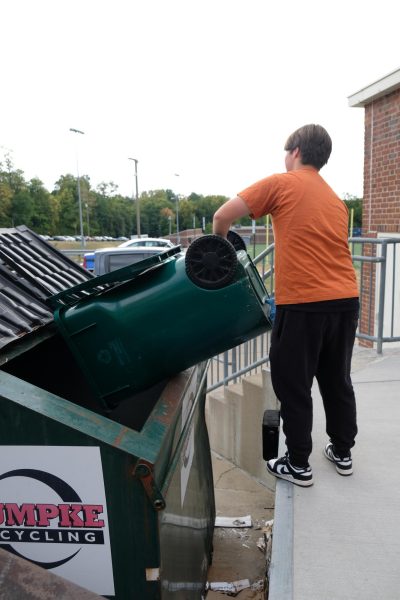Blame corporations, not consumers
The newly popularized and even competitive aspect of thrifting has raised questions about its claims to support sustainable shopping. Can fast fashion be a responsible choice, or are the most sustainable clothes sitting in our closets right now?
Thrifting is not the answer to sustainability.
Over the last few years, thrifting has gained popularity among young people. As ‘influencers’ post thrift hauls and ‘thrift with me’ videos, their audiences applaud these shallow attempts at bringing awareness to the pitfalls of the fast fashion industry. While their motives for posting may be upstanding, promoting this simple solution to an issue as complex as the sustainable fashion industry is ignorant.
Until the late 2010s, thrifting second-hand clothing held a negative connotation. People donated trash bags of old clothes, collected in the back of closets, to make room for the latest trends. Now, the phenomenon is so popular that “I thrifted it,” is a widely accepted statement.
I’m not writing this to tell you where to shop. As a high schooler, who like many teens, has only recently started paying attention to where my clothes come from, I don’t know the right answer either, nor do I think there even is one. I do know that my current shopping habits can undoubtedly be criticized.
I’ve shopped at stores like GAP and H&M without questioning how they source their clothes. I don’t want to spend paychecks on clothing. I’m showered in contradicting media, “thrift”, “shop local”, “stop supporting fast fashion.”
The ethical side of thrifting is complex, with issues of classism, unfair wages and the environment overlapping.
Low-income families don’t have time to sift through bins of clothing at thrift stores. They don’t have the time to research and budget for ethically made clothing. The price tag that comes with handmade clothes presents a barrier for many who want to support local businesses. Oftentimes, stores focused on sustainability struggle to offer size-inclusivity due to a smaller customer base, nearly eliminating the option for plus-size people.
However, there are undeniable benefits to thrifting, as it puts fewer resources into producing new clothing. Its affordability appeals to many, but as more people turn to thrifting, prices have steadily increased, comparable to those of fast-fashion retailers.
The only thing I can confidently say will positively impact the fashion industry is for consumers to be intentional about every purchase we make. Buy fast fashion. If clothing isn’t something you can responsibly splurge on, don’t. Buy secondhand. Just don’t use the prices to justify overconsumption. Stop shaming others for where they chose to buy their clothes.
As said by zero-waste blogger, Anne-Marie Bonneau, “We don’t need a handful of people doing zero waste perfectly. We need millions of people doing it imperfectly.”
Sustainability is not simply demonizing fast fashion. We must strive to make the best choices we can with the resources we have. Financial privilege has a real impact on our decisions, and whether truly sustainable or not, thrifting is here to stay.
The burden of where our clothes are coming from should not be placed on us, as consumers. One person choosing to invest in handmade clothing or one person choosing to profit from reselling thrifted items is note the sole cause or fix to the problem.
Instead, we must put the pressure to change on big companies. Companies need to stop ‘greenwashing’ us with planet-friendly lies and buzzwords. Companies need to stop mass production in wasteful excess. Companies need to pay workers livable wages in safe working conditions. Address the real issue.
Kimaya Mundhe
Your donation will support the student journalists of Walnut Hills High School. Your contribution will allow us to purchase equipment, cover our annual website hosting, printing costs and offset competition and conferences fees for students.













